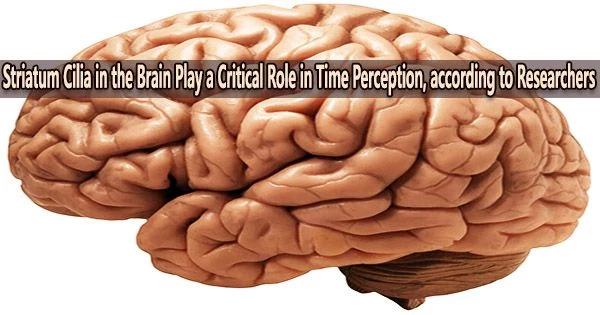The striatum is a subcortical structure in the brain that is involved in motor and cognitive functions, such as movement control and reinforcement learning. In the context of the striatum, cilia are thought to play important roles in signaling pathways that are involved in the regulation of movement, learning, and synaptic plasticity.
Researchers at the University of California, Irvine have discovered that removal of cilia from the brain’s striatum region impaired time perception and judgment, revealing possible new therapeutic targets for mental and neurological conditions including schizophrenia, Parkinson’s, and Huntington’s diseases, autism spectrum disorder, and Tourette syndrome.
The striatum organizes the timing of motor responses and analyzes and integrates new external sensory information. A severe reduction in patients’ ability to adapt to changes in their environment and properly predict the time and end of voluntary acts is a characteristic of particular mental and neurological diseases.
The study, which was just made available online in the journal Molecular Neurobiology, provided the first concrete proof of the crucial part cilia play in timing-dependent failure.
“Our findings may revolutionize our understanding of brain functions and mental disorders in the context of the critical task performed by these previously unappreciated organelles in the brain’s ‘central clock’ function,” said Amal Alachkar, Ph.D., corresponding author and professor of teaching in UCI’s Department of Pharmaceutical Sciences. “Our results may open new avenues for effective intervention through cilia-targeted therapies for treatment.”
The striatum is a component of the brain’s circuitry responsible for central clock operations, which are crucial for managing executive functions like motor coordination, learning, planning, and decision-making as well as working memory and attention. Cilia serve as a signaling hub that senses and sends signals to produce the necessary reactions. They extend from the surfaces of brain cells like antennas.
Our findings may revolutionize our understanding of brain functions and mental disorders in the context of the critical task performed by these previously unappreciated organelles in the brain’s ‘central clock’ function. Our results may open new avenues for effective intervention through cilia-targeted therapies for treatment.
Amal Alachkar
Using conditional gene editing technologies, the researchers deleted cilia from the striatum of mice to investigate their physiological relevance. These rats displayed repeated motor behavior, delays in decision-making, and an inability to acquire new motor tasks.
Additionally, they had trouble recalling their position and orientation in space quickly, as well as filtering out extraneous external sensory data. The mice kept their long-term memories and motor skills that they had already ingrained or become accustomed to.
“Successful performance of working memory, attention, decision-making, and executive function requires accurate and precise timing judgment, usually within a millisecond to a minute,” Alachkar said.
“When that capacity is impaired, it means losing the ability to quickly adjust behavior in response to changes in external stimuli and failing to sustain appropriate, goal-oriented motor responses. Our ongoing work is aimed at understanding the mechanisms by which cilia regulate time perception and developing targeted therapies to improve behavioral deficits.”
Team members also included pharmaceutical sciences graduate students Wedad Alhassen, Sammy Alhassen, Kiki Jiaqi Chen, and Roudabeh Vakil Monfared.
The National Institutes of Health under award numbers R01-HL1473-02S1 and 1F31MH126565-01A1 funded this work, in part.





